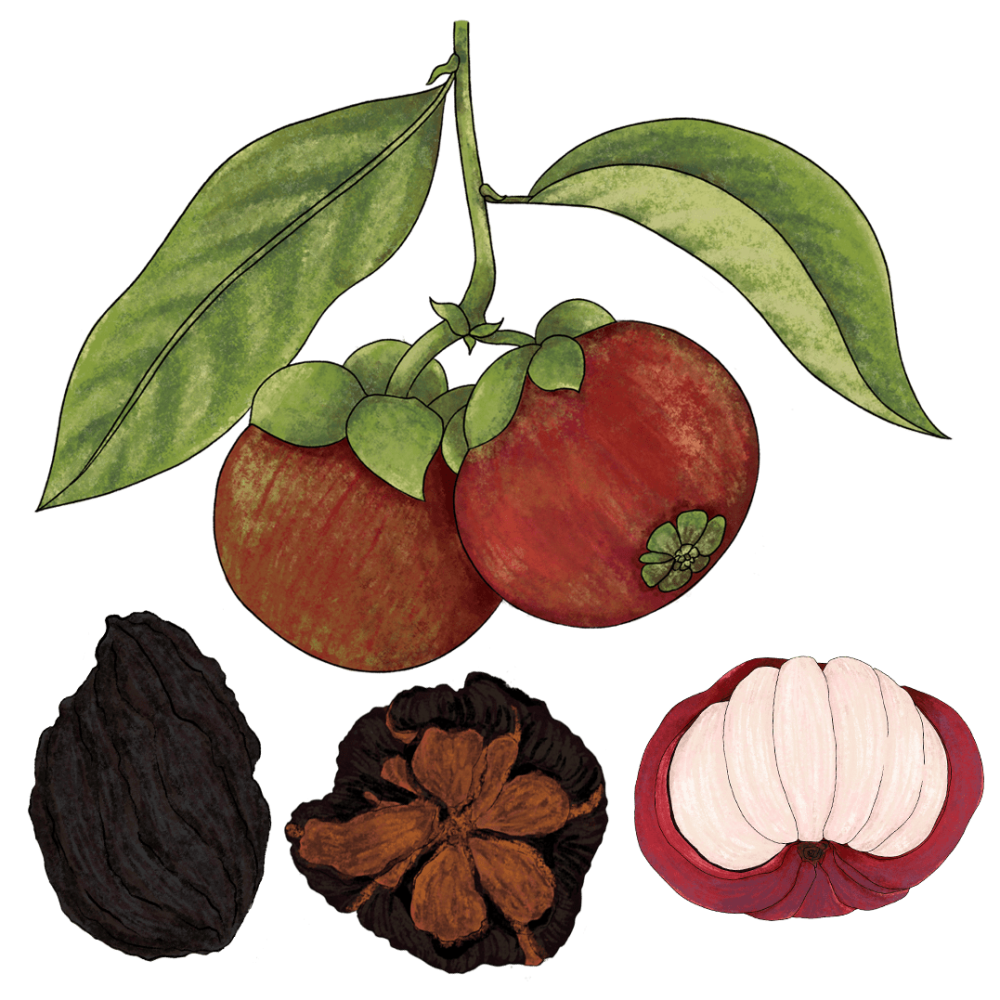Kokum

Latin name: Garcinia Indica
Other names: wild mangosteen
Uses: fruit, medicinal, condiment
In the peak of summer, in the tropical rainforests of India’s Western Ghats, reddish-green berries appear on evergreen trees, then swell to the size of limes. This enchanting little fruit is kokum. Fresh kokum resembles mangosteen, and in fact belongs to the same family, but its rind is crimson rather than deep purple. The fresh white fruit inside bleeds pinkish violet, leaving a sweet memory of sour on the palate. It has a very short shelf-life (one week), but dried or semi-dried kokum rinds are used year-round in many Indian cuisines.
Why is kokum healthy?
Kokum is a rich source of vitamins and minerals, and a powerhouse of health-promoting bioactive compounds with anti-inflammatory properties and even anticancer activity. The fruits are a rich source of anthocyanins (which gives the kokum that rich color and its antioxidant benefits) and hydroxy citric acid, which some researchers believe may help with weight loss. In Ayurveda, kokum rinds and leaves are used to treat inflammation, rheumatic pain, and bowel complaints.
What does kokum taste like?
Fresh kokum has a mildly sweet aroma and the juicy flesh surrounding its seed is pungent and sour with a hint of sweetness. The sourness is mellower in dried kokum rinds.
Where does kokum grow?
Thriving on riverbanks, kokum trees are native to the Western Ghats and the mountainous forests of northeastern India. Kokum from the Ratnagiri and Sindhudurg districts of India’s Konkan region is GI tagged. The region has about 43,000 trees thriving in forests that are over 100 years old due to ideal climate and soil conditions and produce intensely flavorful fruits.
How do I prepare kokum and what do I pair it with?
Discard the seeds (they are astringent and bitter), rinse lightly, and drop three or four rinds in curries for a tangy flavor bomb and a purple tint. Dry kokum is the preferred souring agent in the Konkan region, especially for coconut-based fish curries. In southern India and Gujarat, it is often used in place of tamarind in lentil preparations such as dal, sambar, and rasam. You can add kokum to vegetables like eggplant and okra or blend the rinds into chutneys. If the cooking time is short, pre-soak the rinds and use the concentrate and pulp for a more potent flavor. Make a refreshing drink with either fresh kokum or dry rinds by simply dropping a piece in your water bottle, or sweeten a kokum concentrate to enjoy it as sharbat. You can also add kokum to coconut milk for a deliciously sour digestive drink called sol kadi. If you can get your hands on the fresh fruit, rub salt and chile powder into the pulpy flesh and enjoy the mouth-puckering sourness.
Surprising fact:
Kokum seed kernels are oil-rich and can be pressed to produce kokum butter. This is the preferred cooking fat of the tribal communities involved in harvesting and processing the fruit. Because it behaves similarly to cacao butter, kokum butter is in great demand as a substitute in chocolate and in confectionery products.



